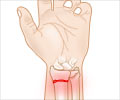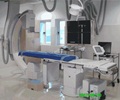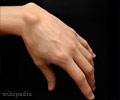Angioplasty through the wrist could be a better option than threading the tube through an artery in the groin.
Angioplasty through the wrist could be a better option than threading the tube through an artery in the groin.
A new study shows that going through the wrist could significantly lower the risk of bleeding — without the discomfort of lying flat for hours while the incision site seals up.Just one in 100 angioplasties is done via the wrist, and the approach isn't for everyone. But Monday's study promises to spur more specialists to use the method.
Angioplasty is prized as a quick, minimally invasive way to restore blood flow in a clogged artery. A tiny balloon is inflated at the site of the blockage, pushing back the clog. Doctors often also insert a mesh tube called a stent to keep the artery propped open. It can be done during a heart attack, to alleviate worsening symptoms that signal a heart attack is imminent, or for non-emergency relief of recurring chest pain.
Cardiologists have preferred working through the femoral artery in the groin because it is a larger blood vessel than the wrist's radial artery, easier to tug catheters through. When the procedure's over, heavy pressure — often a sandbag — is applied for several hours until the puncture site quits bleeding and essentially seals itself. But heavy bleeding and related complications are a risk, happening in anywhere from two per cent to sometimes as many as 10 per cent of patients.
Catheters have gradually gotten smaller and more flexible, and previous small studies had suggested the wrist approach could be safer because that puncture site can be bandaged. In one earlier study, the wrist method even trimmed hospital costs because patients were discharged sooner.
So Duke University researchers turned to a national registry — analyzing more than half a million angioplasties performed at 600 U.S. hospitals between 2004 and 2007 — to see how often wrist angioplasties are done, and the results.
Advertisement
But just 1.3 per cent of the angioplasties were done through the wrist. Both methods were equally effective at clearing heart arteries, lead researcher Dr. Sunil Rao reported in the Journal of the American College of Cardiology: Cardiovascular Interventions.
Advertisement
The method may be gaining steam: In early 2007, the researchers measured a sudden jump, as the wrist method accounted for about 3.5 per cent of angioplasties performed then.
Rao himself uses wrist angioplasty almost exclusively, but it takes extra training that many cardiologists haven't received.
"This approach, when done by experienced operators, has advantages," said Dr. Sidney Smith, heart disease chief at the University of North Carolina at Chapel Hill and a past president of the American Heart Association, who wasn't part of the study.
"The procedure is not one that would be recommended for everybody," Smith told AP. But, "there are definitely groups of patients where this can be done with the same results and fewer complications."
Source-Medindia
GPL














